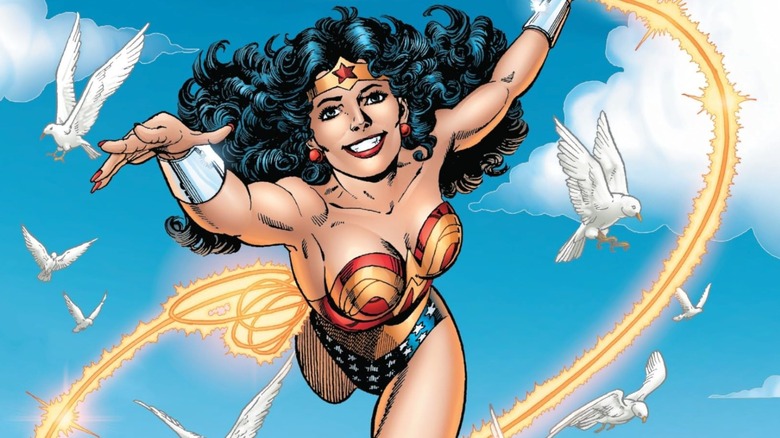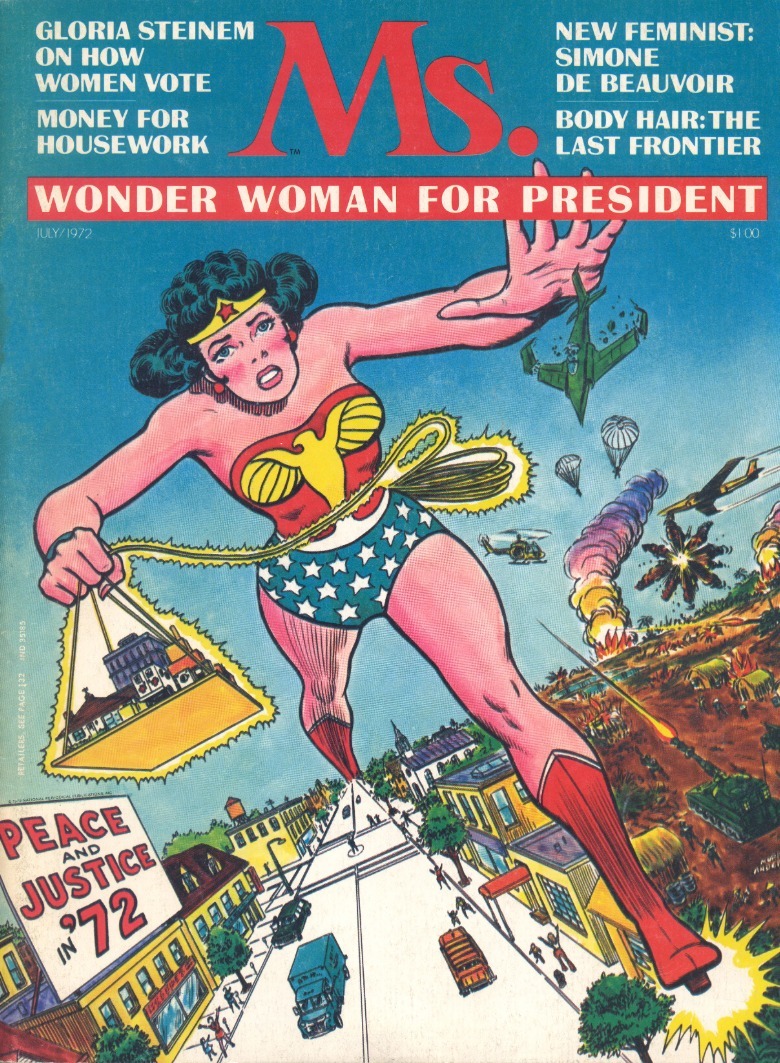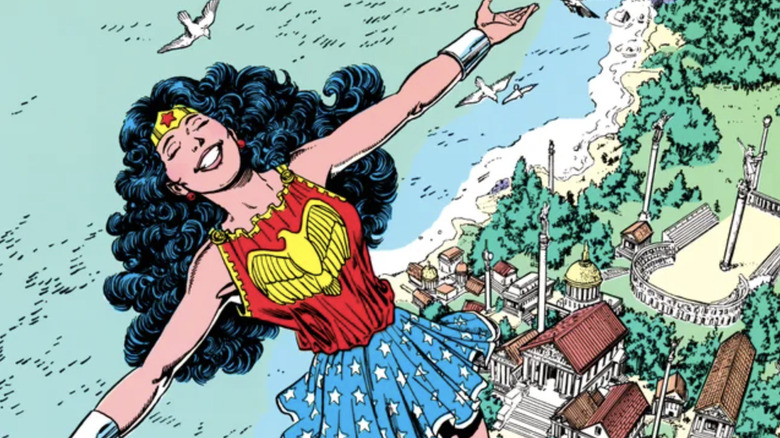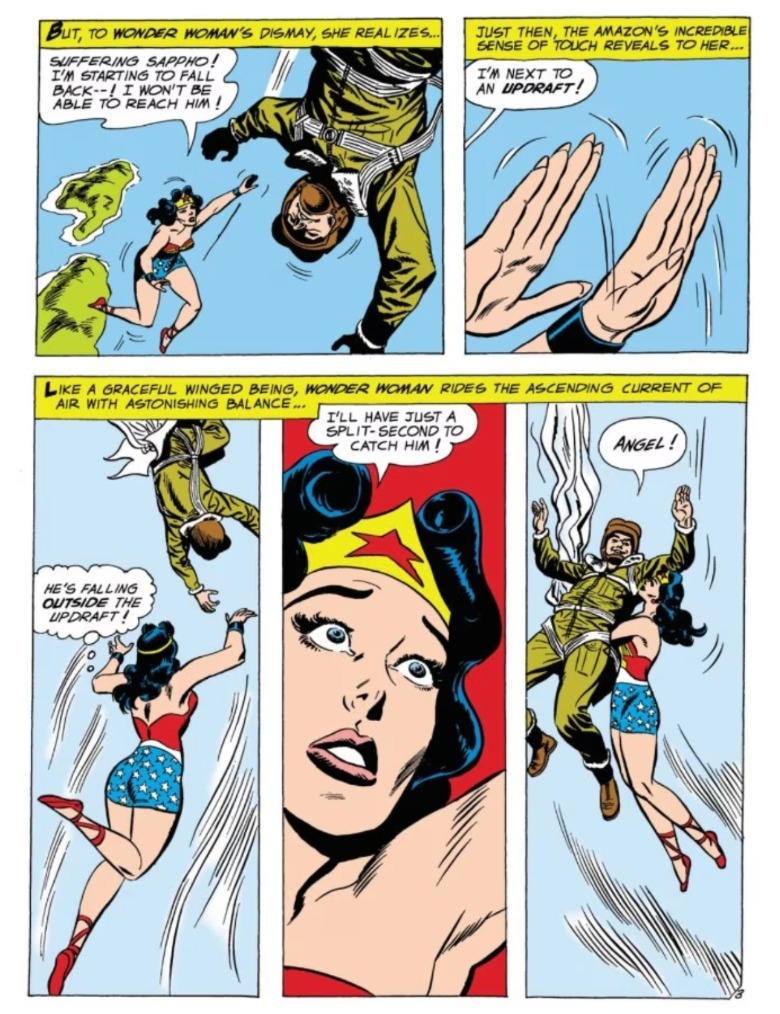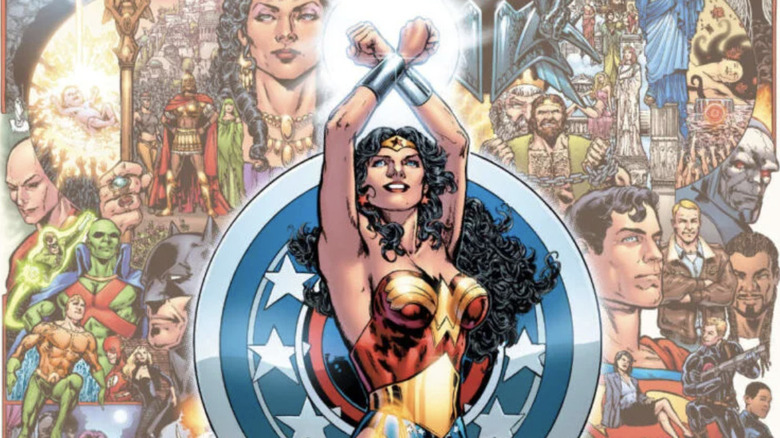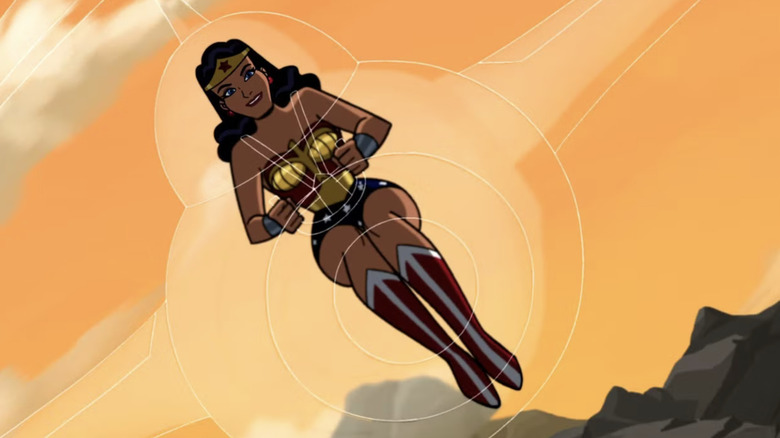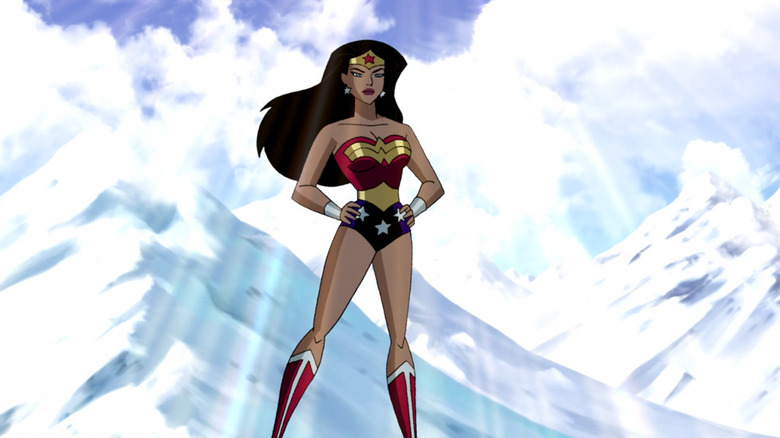Can Wonder Woman Fly? Her DC Comics Powers, Explained
Wonder Woman is the most enduring female superhero ever created, and though that idea may seem old hat in a world with characters like Buffy the Vampire Slayer (and all of her complicated legacy), Jessica Jones, and hundreds if not thousands more, remember that when Wonder Woman debuted in 1941's "All Star Comics" #8, American women had only secured the right to vote 20 years prior. Her character emerges from early 20th century feminist movements; her creator, William Moulton Marston, was part of those, and he wanted to inspire women to be their best selves and men to listen, if not submit, to them. What better way to deliver these lessons, Marston evidently realized, then by publishing them in children's comic books when readers are at formative ages?
So, in writing a truly wondrous woman, did Marston create the world's first flying woman? Can Diana of Themyscira soar like Superman does? It varies, and yes, the answer does reflect on the political and feminist themes of Wonder Woman.
Long story short: For the first 40 years of Wonder Woman's publication, she generally couldn't fly. (Superman couldn't originally fly either, until the 1940s Fleischer Studios' "Superman" animated shorts showed him soaring.) But when writer/artist George Pérez rebooted "Wonder Woman" in 1987, Diana gained the power to fly and has kept it since.
So if you look at some earlier Wonder Woman iterations, you'll find her stuck on the ground. In 1972, when Gloria Steinem's feminist magazine "Ms." went independent, Wonder Woman appeared on the issue's cover (note her leg dividing the background between peace and war). As you can see, she's not soaring above the city, she's walking through it.
In the actual "Wonder Woman" comics of 1972, Diana had ditched her superpowers and classic costume to become an Emma Peel-style martial artist. (This era started from "Wonder Woman" #178, by writer Dennis O'Neil and artist Mike Sekowsky, and ended in 1973 with issue #204.)
Pérez's "Wonder Woman" was the lightning bolt (as if thrown by Zeus) that Diana needed. After decades of mediocrity, the comic made her an A-list hero in more than just name. Pérez, unafraid to put feminist themes front and center, made Wonder Woman the equal of Superman not just in popularity, but power.
How Wonder Woman is able to fly
As documented by DC Comics, the first instance of Wonder Woman flying is pinned down as 1958's "Wonder Woman" issue #98. This issue, by Robert Kanigher and drawn by Ross Andru, retold Diana's origin. In this iteration, Diana does not truly fly, but rather glides on the wind to catch a falling Steve Trevor.
This makes Steve's pet name for Diana ("Angel") extra-fitting, since she saved him mid-air like one (even without wings). A woman catching a man who is falling like a damsel is also pretty subversive for 1958. Critics have described Kanigher's long time on "Wonder Woman" as a conservative, even regressive era, which backpedaled the original comic's daring and utopian feminism. Kanigher was definitely nowhere near the radical that Marston was, but giving Diana flight (or at least gliding) powers was a strong idea.
I find it kind of wild to think that Marston didn't come up with Wonder Woman's flying powers. His comics are loaded with bondage imagery, reflecting both women's subjugation and flipping it by suggesting women should break free of those chains while men should find happiness in submission. (Note the shackle-like silver wristbands that Wonder Woman wears in the images above.) In keeping with breaking bondage, flight is the ultimate freedom, so Diana being able to take off from the ground completes Marston's mission statement.
When Pérez was reimagining Wonder Woman, he and editor Karen Berger agreed she should be a fantasy character first and foremost. Pérez thus leaned heavily on the Greek mythology foundation that Marston laid, introducing the idea Diana's powers came from six blessings by six of the Greek deistic pantheon. Diana's flight no longer came from wind currents, but from a blessing by Hermes, the god of speed and travelers who is sometimes drawn as wearing winged sandals. Hermes gave the gift of both his speed and his flight to Diana, making her fast enough to not only run, but soar through the air.
Wonder Woman's full powers, explained
The other five blessings bestowed on Wonder Woman include super-strength (from Demeter, drawing on the strength of the Earth spirit Gaia), keen intelligence (from Athena), kindness and beauty both (from Aphrodite), the "Eyes of the Hunter," or enhanced senses and ability to empathize with animals (from Artemis), and "Sisterhood of Fire," or the ability to open others' hearts to the truth (Hestia).
Diana channels the last gift through her magic Lasso of Truth, which compels anyone who is bound in it to say only their heart's truth. You see, Marston (a psychologist by trade) did not only create Wonder Woman. He also invented the polygraph, or "lie detector," so he imbued his heroine with the power to destroy lies.
While far stronger and faster than any human thanks to Demeter and Hermes, Diana is also not totally invulnerable (sometimes — it depends on the writer how resilient she is). That's where her metal wrist bands come in. They're not just bondage symbols, they also deflect bullets. Wonder Woman literally flips a symbol of women's oppression into one of empowerment against guns, the favored weapons of men.
Speaking of: Many modern depictions of Wonder Woman show her using a sword to complement the Greek Warrior image. But this completely misses Marston's point. Wonder Woman is an ambassador of peace, sent to transform the world of violence that men have built. A sword is the most phallic of all weapons, designed with no purpose but to kill and cleave flesh. Later "Wonder Woman" storytellers such as Zack Snyder, Geoff Johns (who also suggested that Wonder Woman "has no good villains" because she kills them), and Brian Azzarello trying to make her "cooler" is a failure of imagination that proves Marston's point.
One of the very few things I will give "Wonder Woman 1984" props for is that it had Diana ditch the sword she'd had in previous movies.
Why does Wonder Woman have an Invisible Jet?
Since Marston's Wonder Woman could not fly, she had a different, external method of getting around: Her Invisible Jet. The Jet first appears in Wonder Woman's second appearance, "Sensation Comics" #1, where Diana uses it to bring Steve Trevor back from Paradise Island to the United States.
The jet comes with the advantage of stealth (in its first appearance, Diana and Steve use it to land unseen on an enemy island), but it also has symbolic meaning. As Ritesh Babu writes at Comic Book Herald, the image of an Invisible Jet flying unseen through the sky reflects how women are often expected to move through the world, quiet and unseen.
The Invisible Jet's origin is not spelled out in its first appearance, it's just suggested to be a product of the Amazons' strange and advanced technology. In "Wonder Woman" #128, Kanigher and Andru invented a new origin that the jet is actually a transformed Pegasus. (This could be an influence on Kelly Thompson and Hayden Sherman's new "Absolute Wonder Woman" comic where Diana rides an undead skeletal Pegasus.)
Ever since flight became a staple of her powers, Wonder Woman doesn't really need the Invisible Jet anymore. Since it was a fixture of her history, though, it's never totally gone away. The animated "Justice League" cartoon consistently showed Diana flying all on her own, but in the later "Justice League Unlimited" seasons, she somehow has the Invisible Jet.
The animated film "Justice League: Crisis On Two Earths" was meant to explain where the Jet came from, but it was ultimately rewritten as a standalone feature, unconnected to the cartoon series. In that film, the Justice League is fighting the Crime Syndicate, their evil counterparts from another universe. Owlman (the evil Batman) has a jet with a cloaking device, which Wonder Woman steals and decides to keep.
Does Wonder Woman fly in movies and television shows?
Generally, "Wonder Woman" adaptations reflect the comics in that earlier ones did not have Diana fly, because that wasn't one of her powers at the time. Later onscreen Wonder Women usually can fly, but not always.
The 1970s "Wonder Woman" TV series starring Lynda Carter did not have its heroine fly (which must've saved the special effects budget quite a bit). Note the series' opening title sequence, where Diana is depicted as diving off of a skyscraper and landing unharmed, but not flying on her way down.
In the aforementioned DC Animated Universe, Wonder Woman (voiced by Susan Eisenberg) could fly. Later animated iterations, such as the myriad animated DC movies and "Justice League Action," also show Wonder Woman flying. The two animated films that Wonder Woman has headlined, the 2009 "Wonder Woman" and 2019 "Wonder Woman: Bloodlines," also both show her taking flight.
The DC Extended Universe movies, featuring Gal Gadot as Wonder Woman, did not feature her flying at first, so one could assume she doesn't have that ability. Then "Wonder Woman 1984" revealed that, no, she can, and what is likely to be her final appearance (in "The Flash") ends with her soaring off into the sky and out of frame. If/when the new DC Universe by James Gunn introduces a new Wonder Woman, I'd bet she'd be able to fly, too — "All the world's waiting for you and the power you possess," indeed.
